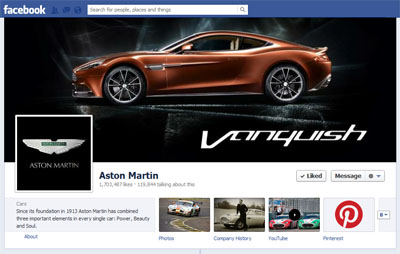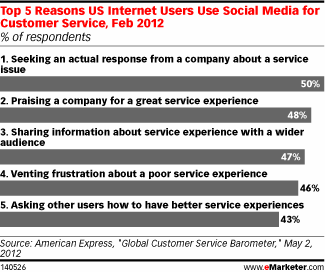British automaker Aston Martin chose digital to market its new Vanquish model and saw a more than 100 percent increase in visitors to its Web site from social media channels among users in Germany, the United States and its home country.

The digital campaign that spanned Facebook, Twitter, YouTube and the Aston Martin Web site began June 20 and centered on a digital car configurator, images and a video. The automaker saw the highest traffic on its Web site ever
recorded during the first three days of the campaign.
“Luxury automotive brands have communities of people that are incredibly passionate about their product,” said Jenn Heinen, associate director of social strategies at Morpheus Media, New York.
“Leveraging any kind of community-driven platform makes perfect sense to distribute content to a group of people who are already engaged with a product and lifestyle,” she said.
“Especially with more niche communities, the excitement and eagerness to interact with this kind of content makes social platforms all the more impactful for content syndication.”
Aston Martin recorded June 20-22 as its three highest traffic days on its global Web site at http://www.astonmartin.com. It saw the average number of daily visitors to the site double in the first seven days of the Vanquish campaign, per the brand.
As compared with the same period seven days earlier, the automaker saw a 216 percent increase in visitors to the site from the German market. There were also 162 percent, 102 percent and 81 percent increases in visits from consumers in Britain, the U.S. and China, respectively.
The digital campaign that spanned Facebook, Twitter, YouTube and the Aston Martin Web site began June 20 and centered on a digital car configurator, images and a video. The automaker saw the highest traffic on its Web site ever recorded during the first three days of the campaign.
“Luxury automotive brands have communities of people that are incredibly passionate about their product,” said Jenn Heinen, associate director of social strategies at Morpheus Media, New York.
“Leveraging any kind of community-driven platform makes perfect sense to distribute content to a group of people who are already engaged with a product and lifestyle,” she said.
Especially with more niche communities, the excitement and eagerness to interact with this kind of content makes social platforms all the more impactful for content syndication.”
Aston Martin recorded June 20-22 as its three highest traffic days on its global Web site at http://www.astonmartin.com. It saw the average number of daily visitors to the site double in the first seven days of the Vanquish campaign, per the brand.
As compared with the same period seven days earlier, the automaker saw a 216 percent increase in visitors to the site from the German market. There were also 162 percent, 102 percent and 81 percent increases in visits from consumers in Britain, the U.S. and China, respectively.
Read more



